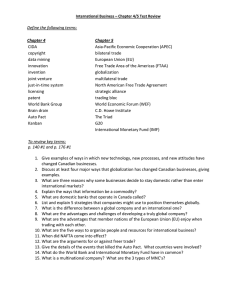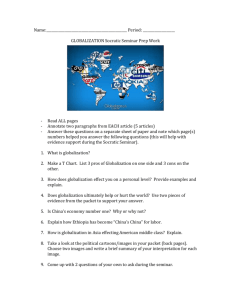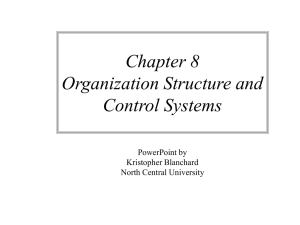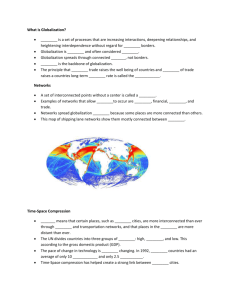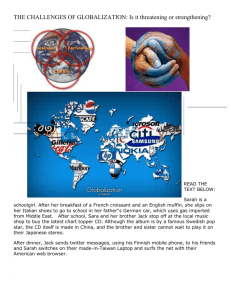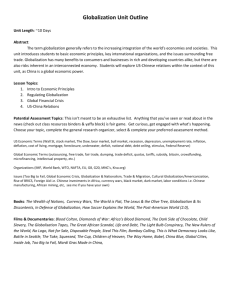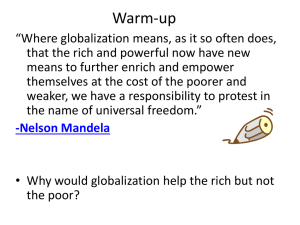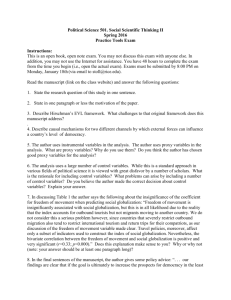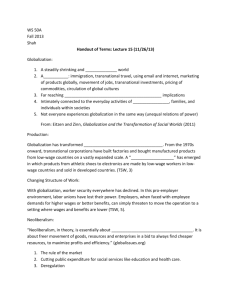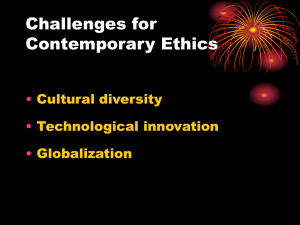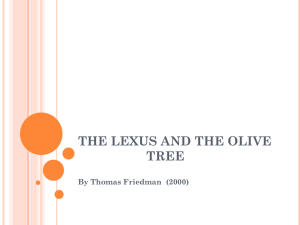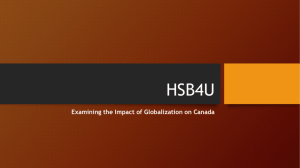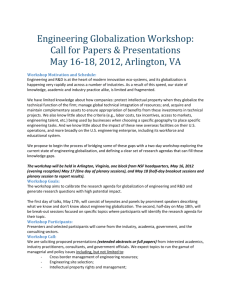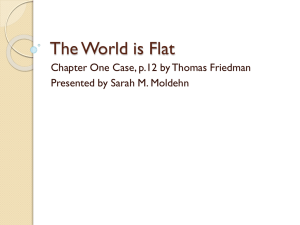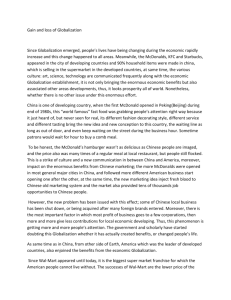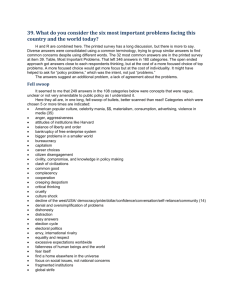Chapter 4 – “Affirming Identity, Language and Culture”
advertisement
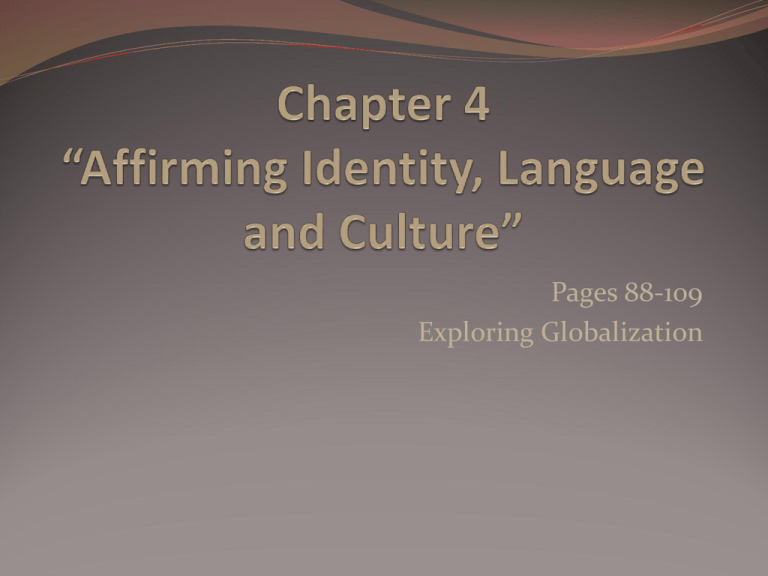
Pages 88-109 Exploring Globalization Read pages 90-93 To some people Language is identity. Do you feel that way? Experts believe that there are between 6000-7000 languages spoken on Earth. And that about 1 language disappears each week. However, some languages are still being discovered in remote areas. Of these 6000 languages 96% are spoken by only 4% of the population. What does that mean? Tevfik Esenc 1904-1992 Most of the languages are endangered. For example, ‘Ubykh’ died in 1992 when the last person able to speak it died in Russia. What are the top 3 languages in terms of number of speakers? Chinese English Spanish Why is English the dominant language? It is the most common in the business, scientific research, pop culture, and the internet and World Wide Web. The internet is designed to use the Roman alphabet (a, b, c, d….) not characters used in other languages such as Arabic, Russian, Chinese or Japanese. What does this mean? Most people can’t benefit from it. However! The number of people who grow up speaking English as their first language is declining! 9% of the world population now speaks English as their first language and it is expected to drop to 5% in 2050. In 2006 what was the world’s largest language group, in terms of first language speakers? Mandarin Chinese. Read ‘Magic Carpet’ page 93Exploring Globalization Discuss ‘Reflect and Respond’ on page 93, Exploring Globalization. Can languages be saved from extinction? The Hebrew language. In 1880 no child spoke it as their first language. It was a sacred language, used for prayer and recitation. Today after many years of determination by the Jewish people to revitalize and modernize the language, it is the Official language of Israel. By 1995, 63% of the population spoke Hebrew as their first language. Canada was the first country in the world to adopt Multiculturalism as official government policy! Pierre Elliot Trudeau was the Prime Minister at the time. In 2006, on Multiculturalism Day, our Governor General Michelle Jean (Born in Haiti) reaffirmed the policy by saying… “Today’s Canada contains the world. Rich in demographic and cultural diversity, Canada is a model of openness and harmony in the concert of nations… Bringing together so many cultures and perspectives certainly enriches us all, but it is also a challenge that all of humanity must now face in this age of globalization… Together, let us build on the strengths of our diversity and on dialogue rather than become mired in the clash of cultures.” Other programs, policies and laws that protect and promote language and culture in Canada are Official Languages Act of 1969, English and French are the country’s official languages. Charter of Rights and Freedoms of 1982. Cultural Content Laws, to protect artists, performers, songs, movies and literature. In 1968 the CRTC (Canadian RadioTelevision and Telecommunications Commission) enforced quotas for Canadian content; 30% of music and 60% of Television must be Canadian. France, Australia, China, and Mexico all have similar policies to protect their language and culture. UNESCO, which includes 191 member states, is one of the largest international organizations promoting Cultural Diversity. Their motto is ‘Cultural wealth of the world is its diversity in dialogue’. How is globalization helping or hurting cultural diversity? How do you protect intangible history such as carnival’s, songs, stories, theatre pieces, teachings and celebrations? In 2006 Indigenous people from around the world wanted the United Nations General Assembly to adopt the ‘Declaration on the Rights of Indigenous People’ it was delayed and is still in discussion as some nations including Canada did not agree with the wording of the declaration.

